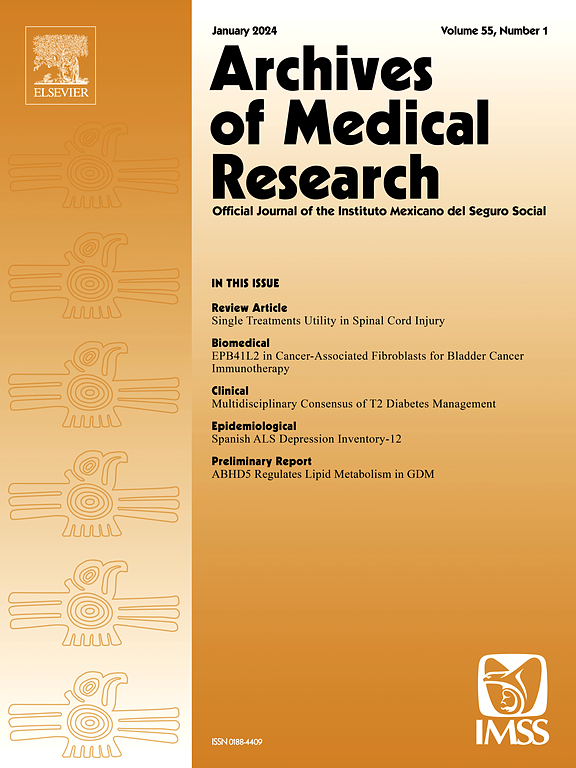Factor VIII Pharmacokinetics in Mexican Patients With Hemophilia A
IF 3.4
3区 医学
Q1 MEDICINE, RESEARCH & EXPERIMENTAL
引用次数: 0
Abstract
Introduction
Treatment of patients with severe hemophilia A requires the replacement of deficient factor VIII. To reach the international standards of care, an optimal dose of factor VIII should be administered based on pharmacokinetic analysis. However, in Mexico factor VIII pharmacokinetics is not used. Therefore, this study aimed to determine, for the first time, the pharmacokinetic parameters of factor VIII in Mexican patients with severe hemophilia A.
Methods
Fifteen samples from patients with severe hemophilia A under prophylactic treatment were analyzed. Factor VIII activity was determined before infusion at 0.25, 0.5, 1.0, 4.0, 8.0, 12, and 48 h after infusion of a standardized dose of factor VIII (40 UI/kg). WinNolin software was used to establish a mono- and bi-compartmental models to obtain the following parameters: area under the curve, maximum activity, in vivo recovery, distribution volume, half-life time, mean residence time, clearance, minimum activity, and elimination constant.
Results
Factor VIII pharmacokinetics was highly variable among our patients who frequently received overdosage of factor VIII. The bi-compartmental model better explained the behavior of factor VIII in patients with hemophilia A.
Conclusions
Compared with the regimens based on body weight, factor VIII pharmacokinetics shows that the response to factor VIII treatment differs greatly among our patients. Our results strongly suggest that factor VIII treatment must be personalized, regardless of body weight. The lack of evidence and experience on factor VIII pharmacokinetics in our country may represent an obstacle to the future use of extended half-life recombinant factor VIII products.
墨西哥A型血友病患者的因子VIII药代动力学
重度A型血友病患者的治疗需要补充缺陷因子VIII。为了达到国际护理标准,应根据药代动力学分析给予因子VIII的最佳剂量。然而,在墨西哥没有使用因子VIII药代动力学。因此,本研究旨在首次测定墨西哥严重血友病A患者体内因子VIII的药动学参数。方法对15例预防性治疗的严重血友病A患者样本进行分析。在输注标准剂量(40 UI/kg)后0.25、0.5、1.0、4.0、8.0、12和48小时,检测输注前因子VIII的活性。采用WinNolin软件建立单室和双室模型,获得曲线下面积、最大活性、体内恢复、分布体积、半衰期、平均停留时间、清除率、最小活性和消除常数。结果在经常过量使用因子VIII的患者中,因子VIII的药代动力学变化很大。双室室模型更好地解释了因子VIII在血友病患者中的行为。结论与基于体重的方案相比,因子VIII药代动力学显示患者对因子VIII治疗的反应差异很大。我们的研究结果强烈表明,无论体重如何,因子VIII治疗必须个性化。我国缺乏关于因子VIII药代动力学的证据和经验,可能是未来使用延长半衰期重组因子VIII产品的障碍。
本文章由计算机程序翻译,如有差异,请以英文原文为准。
求助全文
约1分钟内获得全文
求助全文
来源期刊

Archives of Medical Research
医学-医学:研究与实验
CiteScore
12.50
自引率
0.00%
发文量
84
审稿时长
28 days
期刊介绍:
Archives of Medical Research serves as a platform for publishing original peer-reviewed medical research, aiming to bridge gaps created by medical specialization. The journal covers three main categories - biomedical, clinical, and epidemiological contributions, along with review articles and preliminary communications. With an international scope, it presents the study of diseases from diverse perspectives, offering the medical community original investigations ranging from molecular biology to clinical epidemiology in a single publication.
 求助内容:
求助内容: 应助结果提醒方式:
应助结果提醒方式:


